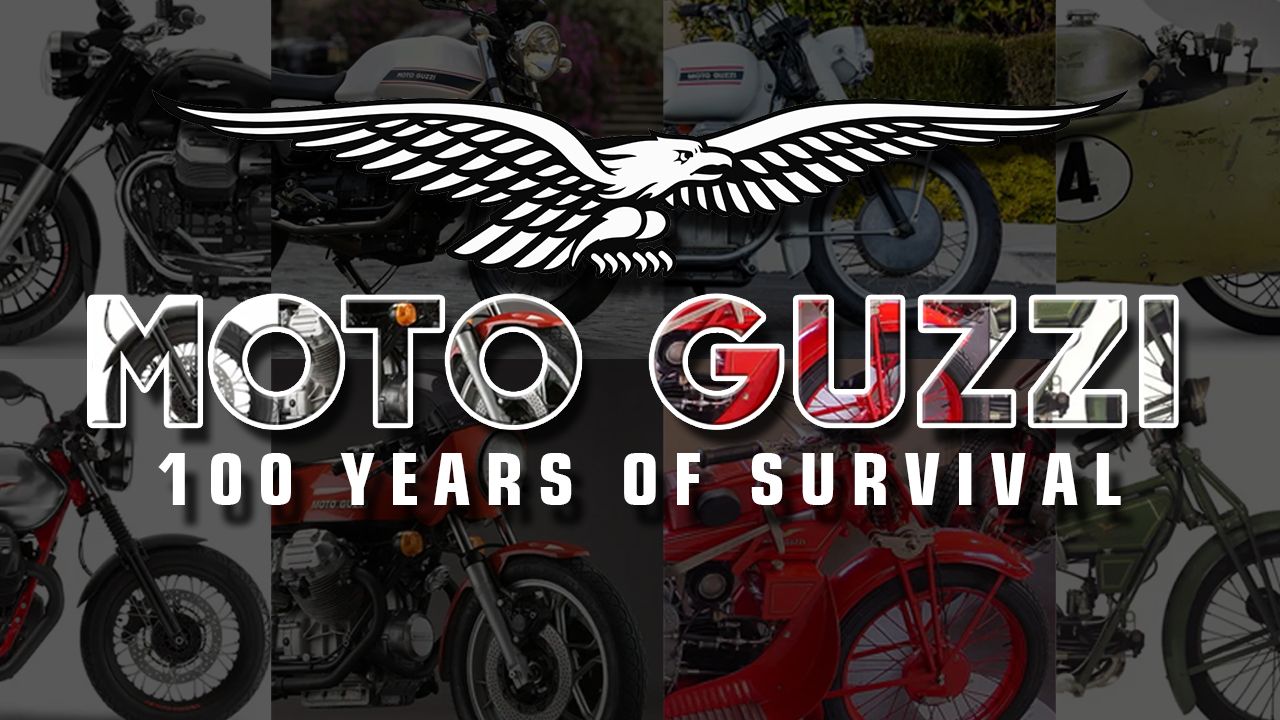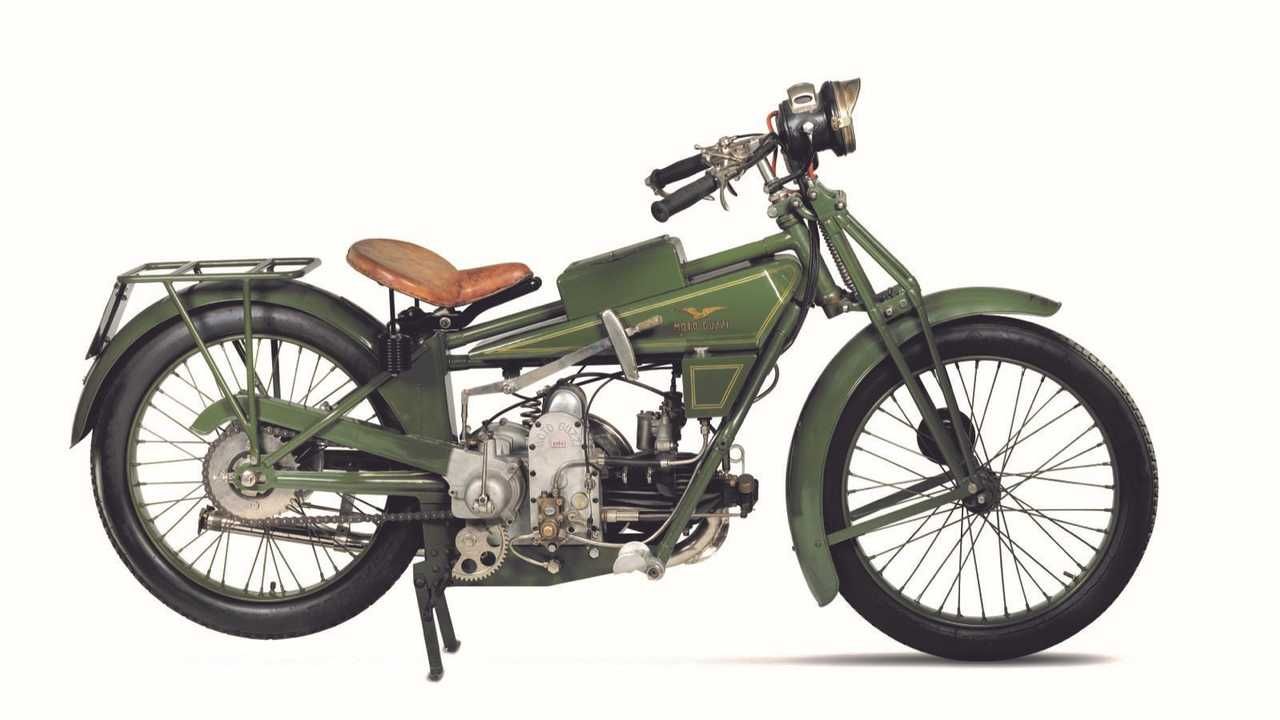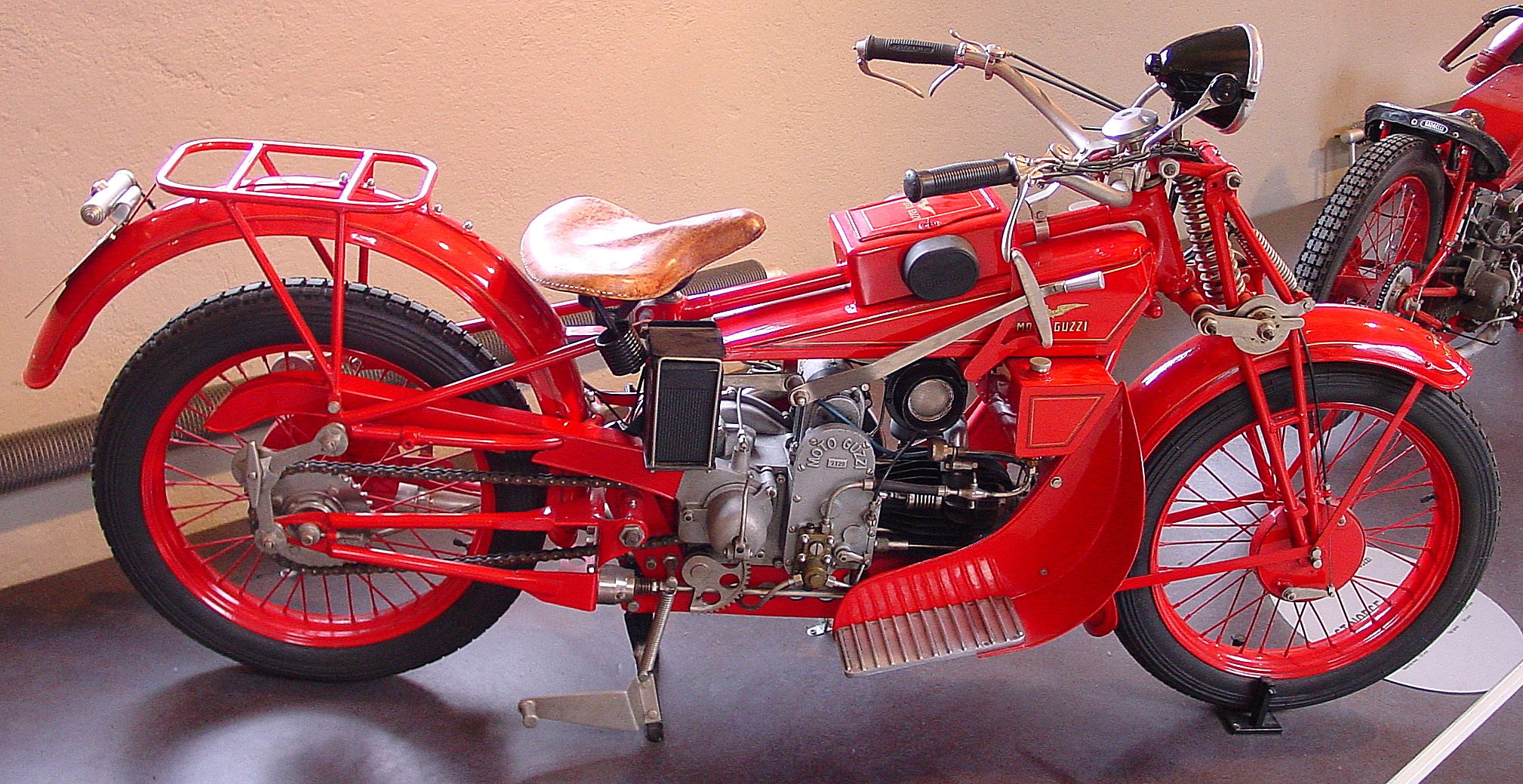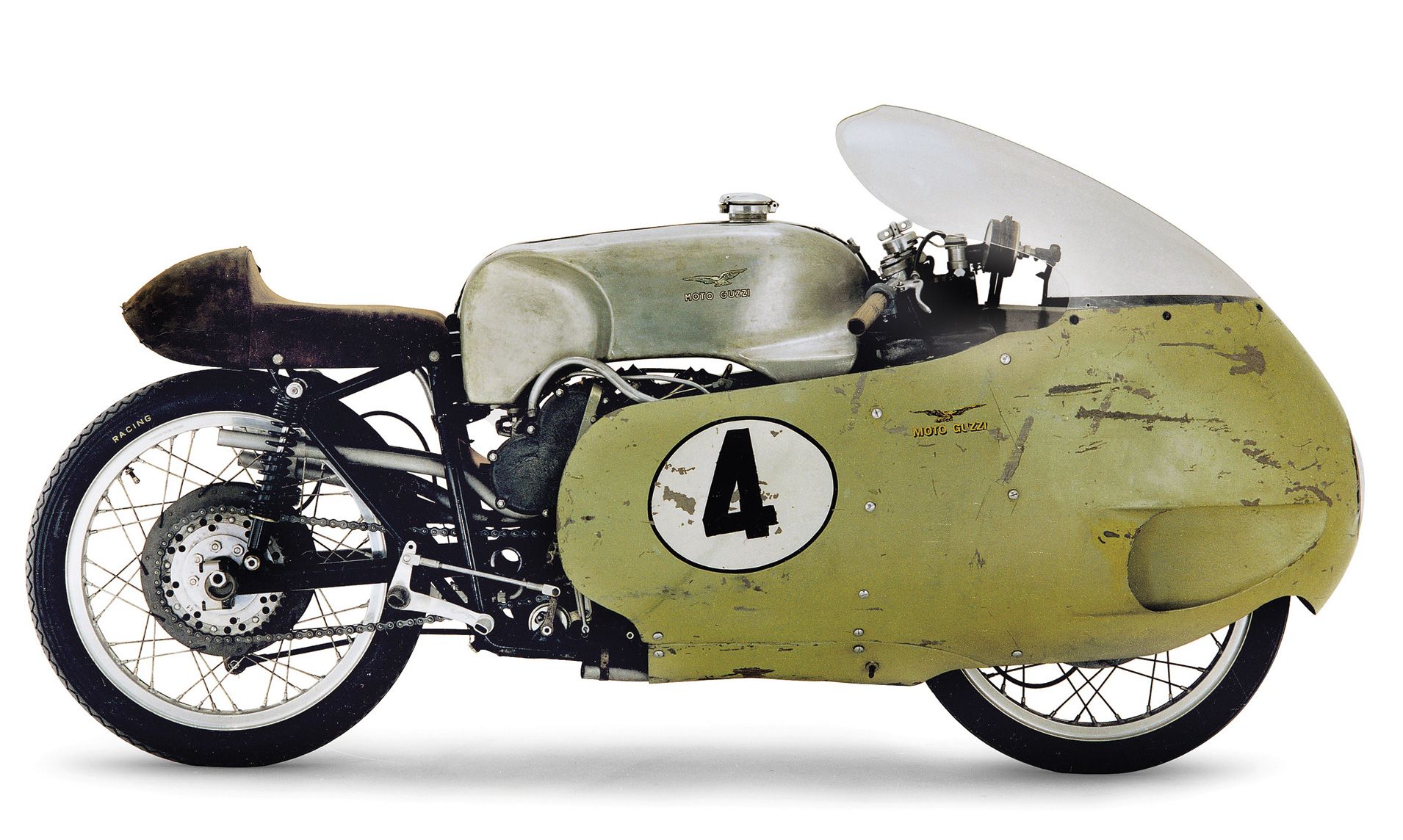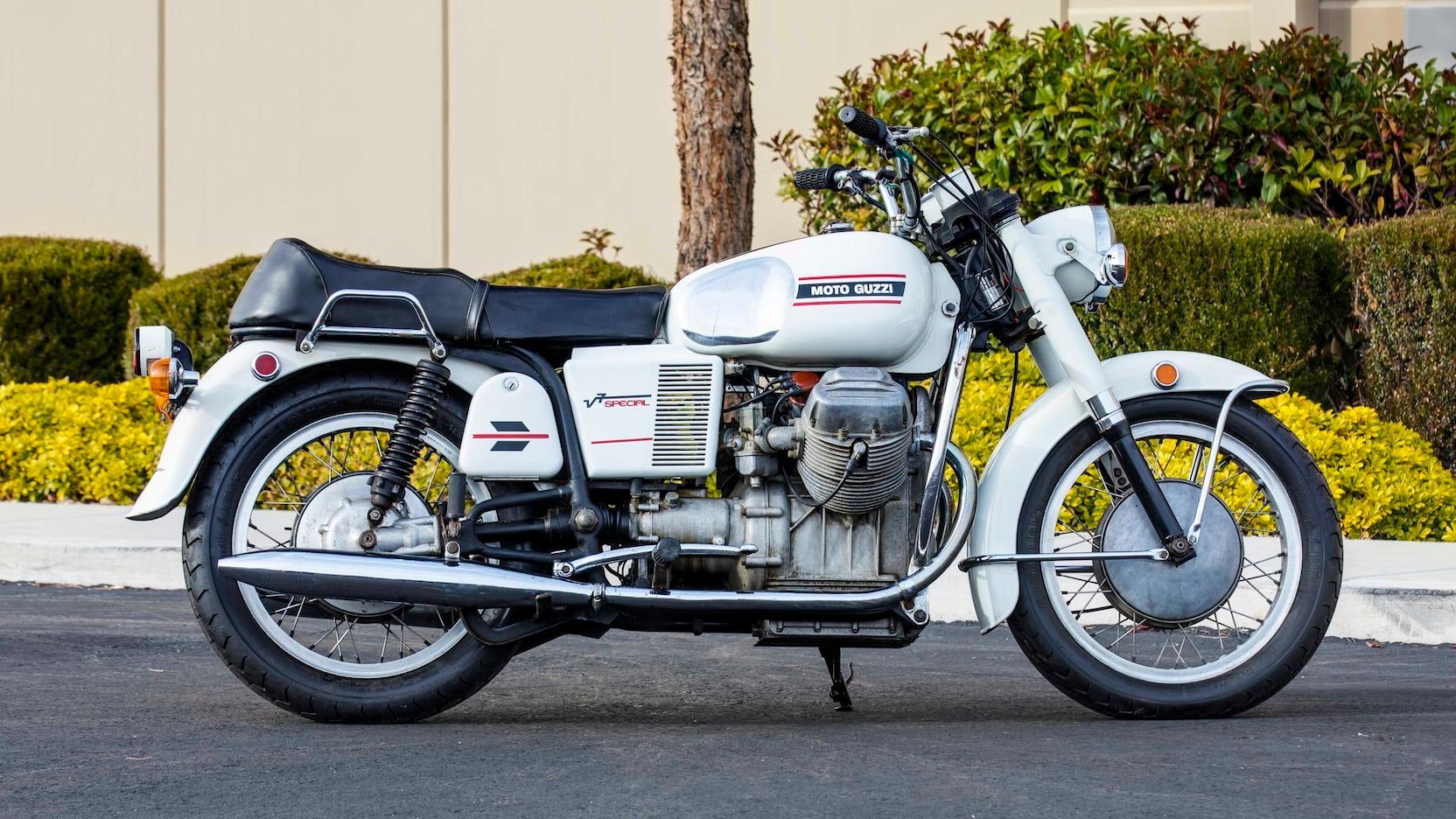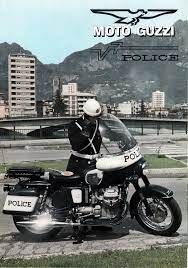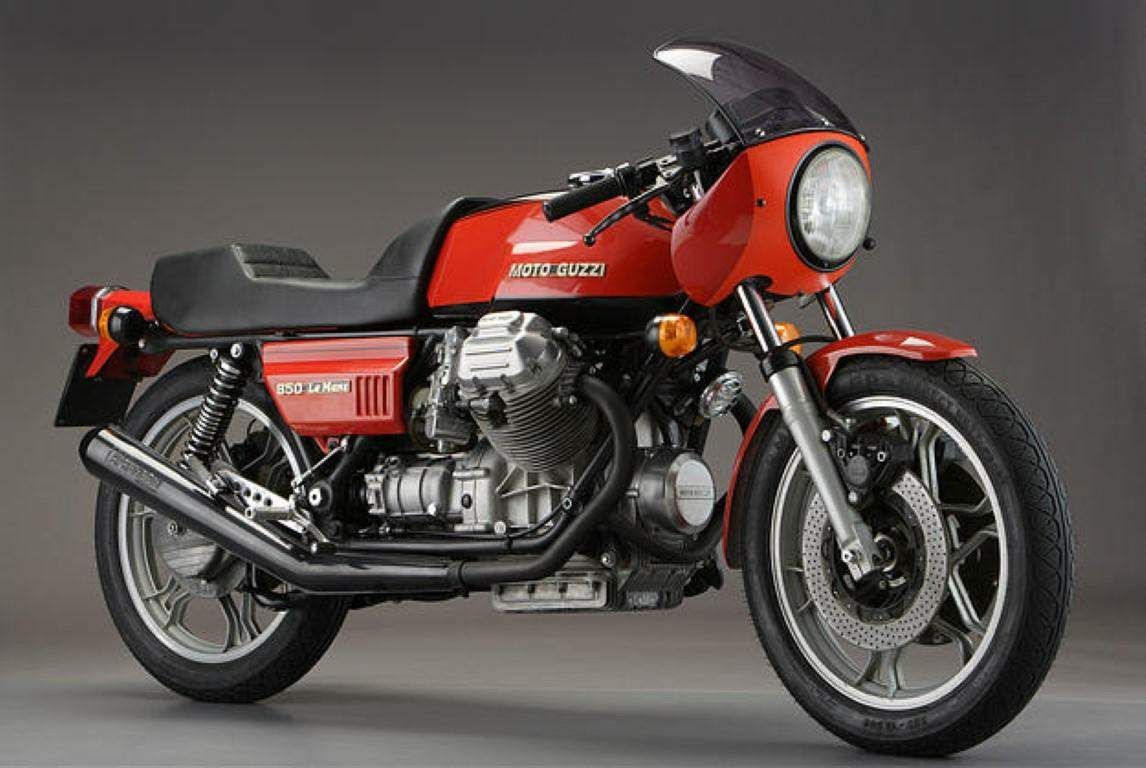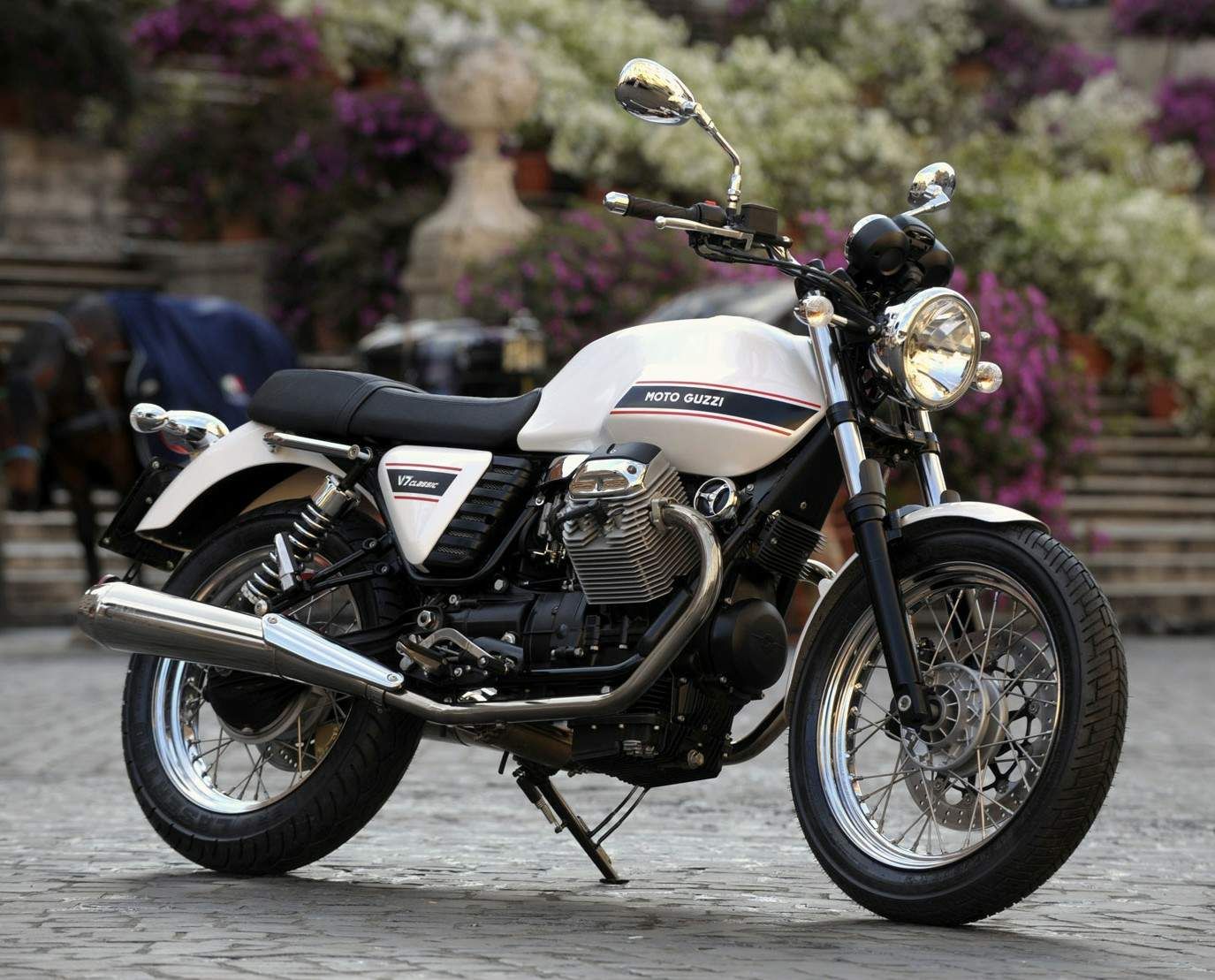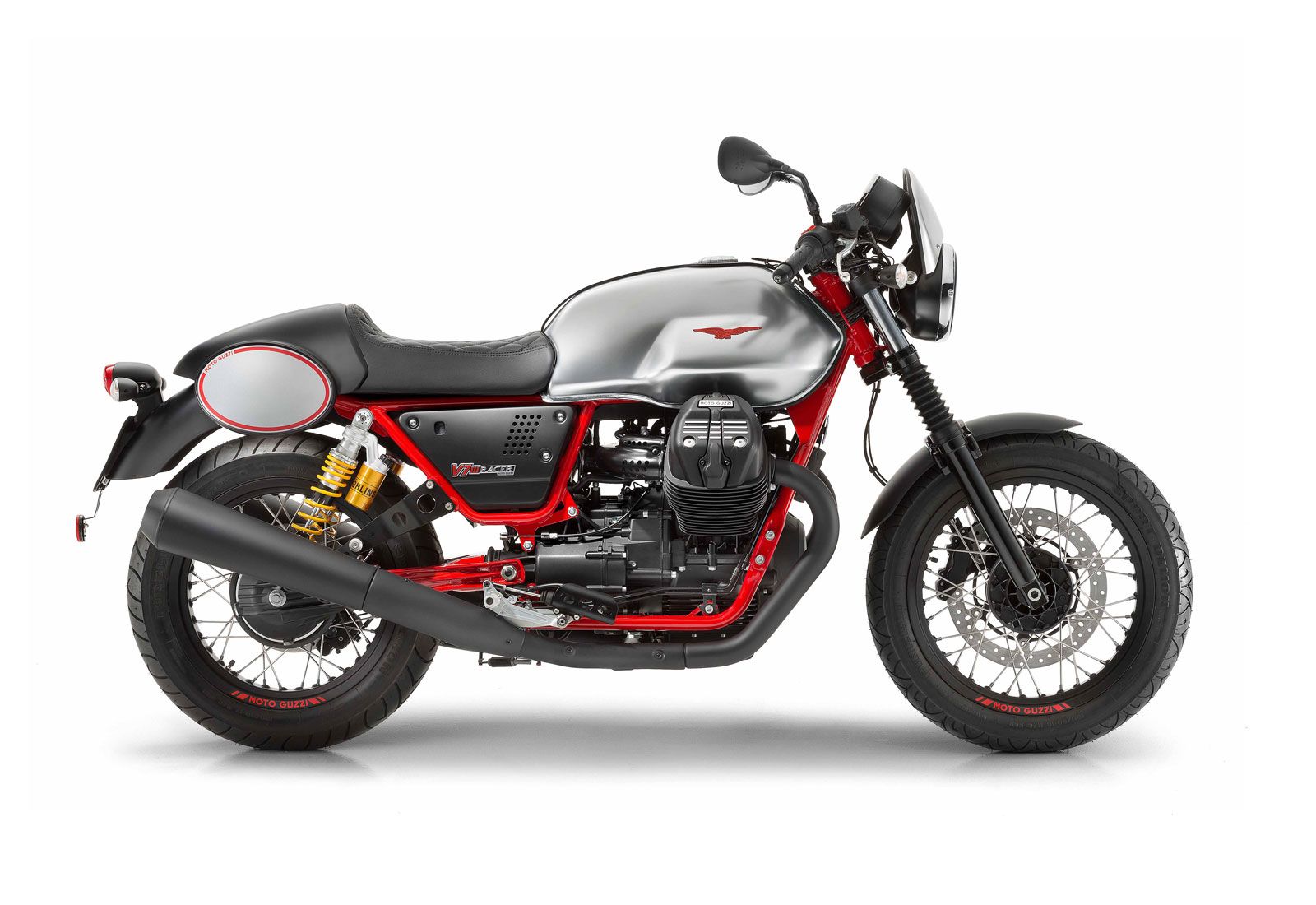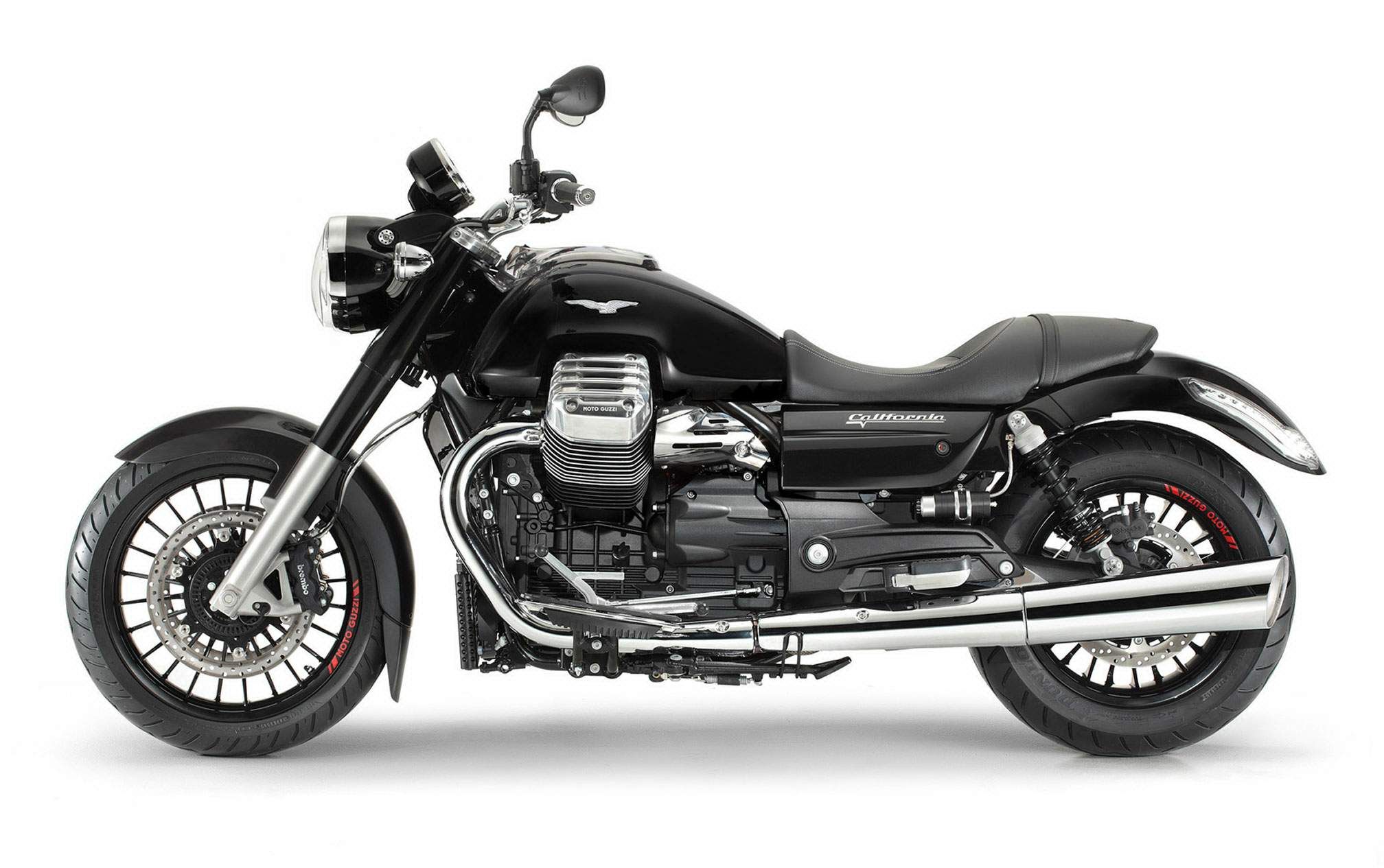Despite a history dotted with uncertainty and financial troubles, the iconic Italian manufacturer has survived for 100 years. Here's a potted history of an idiosyncratic manufacturer.
Moto Guzzi Celebrates 100 Years of Survival
You have to say this about Moto Guzzi - it is a manufacturer that has always done things its own way and to hell with convention. The motorcycles it has produced in its 100 year history have been as distinctive as they have been successful, with some incredible engineering along the way.
It's a fascinating story, from the dominating racing machines of the 1930s, to the incredible V8 500cc GP bike in the 1950s and the utterly distinctive transverse v-twins of the 1970s and beyond, from being Italy's largest bike manufacturer in the 1950s to decline and financial troubles from the 1980s onwards to the present day revival of its fortunes, still based around that transverse v-twin engine.
Moto Guzzi had its foundations at the end of the First World War. Pilots Giovanni Ravelli and Giorgio Parodi and mechanic Carlo Guzzi joined forces to create the marque, Guzzi would engineer the bikes, Parodi would finance the venture and Ravelli would promote it through his racing exploits.
Ravelli was killed in an air crash soon after but the other two decided to carry on and the company was formed in 1921. Initially called G.P. (Guzzi Parodi), it was changed to Moto Guzzi and the legend was forged.
As in the early 1970s, the first bike Guzzi produced was powered by a horizontal-cylinder 500cc single. Called the Normale, it lay down the roots of every Guzzi for the next 45 years. The company was spectacularly successful in racing which did it no harm whatsoever. Stanley Woods famously won two Isle of Man TT races in one week in 1935 and these were but two of a long string of important victories for the fledgeling factory.
Into the 1950s, Guzzi was Italy's largest motorcycle manufacturer and success continued on the race track, with five consecutive 350cc World Championships. Then came the incredible V8 500cc GP racer in 1955 which was a marvel of engineering that no other established manufacturer could match, although it wasn't nearly as successful as the contemporary Nortons and Gileras, not to mention the MV Agustas.
Then came the end of the decade and the slump in the motorcycle industry as people turned to new small cars such as the Mini and Fiat 500. Faced with falling sales, the Italian manufacturers agreed on a pact to discontinue racing activities for 1958. While Guzzi, Mondial and Gilera stuck to the pact, Count Agusta went back on his word and continued, with devastating success.
Guzzi attempted to move into scooter production, only to hit the brick wall that was Lambretta, who threatened to start producing large-capacity bikes if Guzzi moved into the scooter market. it was a body-blow that caused the first of Guzzi's lurches into deep financial trouble.
But the company wasn't down and out just yet. A government-sponsored competition to develop a large-capacity police motorcycle spurred Guzzi engineers to work on a new V-twin engine in the early 1960s.
Designed by the same man who had dreamt up the V8 racing engine, Cesare Carcano, the transverse 90° was born and, after a slow start, sowed the seeds of a new period of success. Then came nationalisation of the company which gave the company financial stability to further develop the V-twin and the capability to explore new directions.
The first V7 was developed into the 750cc V7 Special and the faster V7 Sport, which would eventually give birth to the iconic Le Mans sports bikes.
Meanwhile, in the U.S., Guzzi's importer, the Berliner Motor Corporation, talked to the LAPD and the outcome was a new patrol bike based on the V7. The resulting 1969 V7 Police Special was a huge success and Guzzi released a civilian version, the Ambassador. The new model helped Guzzi to a production record of 46,000 bikes in 1971. The scene was set for a very good decade indeed.
The Ambassador morphed into the Eldorado and, later, the California in 1973, with a capacity of 850cc. In 1975, the first Le Mans appeared, also of 850cc, as well as the T3 range.
De Tomaso bought Guzzi, Benelli and Maserati in 1973 and, for a while, things were looking rosy but, heading into the 1980s, Guzzi was back to its struggling ways. The problems were lack of investment and an ageing model line-up that was no match for the new breed of Japanese superbikes and cruisers.
Somehow, Guzzi soldiered on and, in 2000, Aprilia bought Moto Guzzi and put in place plans to modernise the factory and the range of motorcycles. But then Aprilia found itself stretched too thin and, in 2004, Guzzi production stopped.
All was not lost. Piaggio then stepped in and bought Aprilia and, therefore, Moto Guzzi. By this time, the retro or 'modern classic' movement was in full swing, having been initiated by Triumph with its new Bonneville range. Guzzi was ideally placed to join in the retro party and the subsequent V7-based range was a huge success.
The California 1400 cruiser proved to be a big hit and now, there is the brand new, liquid-cooled and high-tech Mondello to take Moto Guzzi into the next successful period in its long and storied history.
And that is something that makes me very happy. There is nothing in motorcycling like riding a large-capacity Moto Guzzi. The Le Mans Mk.3 was a wonderful long-legged and super-stable sports-touring bike, while the V7 Cafe Racer was visually beautiful, if a little under powered. They are such distinctive motorcycles, unlike anything else on the road and, it is for that reason that we can't afford to be without Moto Guzzi in the motorcycling world.
Happy Birthday, M-G.

